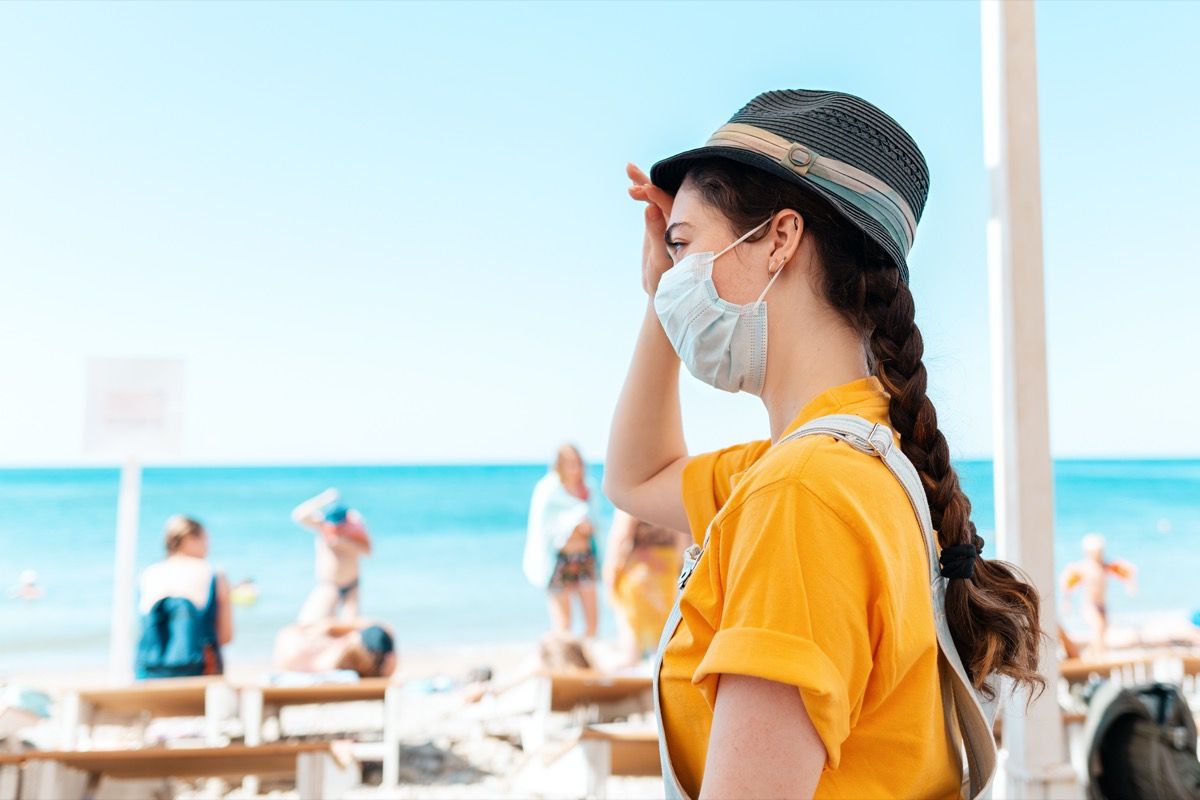To be exact, 50 micron droplets expelled in 95 percent humidity lived up to 23 times longer in the air than those expelled in 0 percent humidity. That’s because droplets evaporate more quickly when there is less water vapor in the air. This was particularly true of the smaller droplets researchers modeled, compared to those that were 100 microns. It’s important to note that the study wasn’t dealing specifically with coronavirus-infected droplets and there are still many unanswered questions about how exactly airborne COVID transmission works. But we do know that the respiratory droplets of carriers (whether they’re symptomatic or not) are loaded with virus particles. The Physics of Fluids study suggests that those particles may hover in the air much longer on humid days as opposed to quickly evaporating or falling to the ground.ae0fcc31ae342fd3a1346ebb1f342fcb In the study, humidity also affected how far droplets traveled away from the source. Smaller droplets traveled as far as 16 feet in 100 percent humidity, compared to about 11 feet in 50 percent humidity. And when researchers simulated a “cough jet,” they found that the percentage of expelled respiratory droplets that didn’t immediately evaporate or fall to the ground decreased as the humidity decreased. “If the virus load associated with the droplets is proportional to the volume, almost 70 percent of the virus would be deposited on the ground during a cough,” the study’s author, Binbin Wang, PhD, said in a statement. “Maintaining physical distance would significantly remediate the spread of this disease through reducing deposition of droplets onto people and through reducing the probability of inhalation of aerosols near the infectious source.” RELATED: For more up-to-date information, sign up for our daily newsletter. However, the relationship between humidity and respiratory droplets is complicated and there are several factors to consider. In June, Erin Bromage, PhD, an associate professor of biology at the University of Massachusetts, Dartmouth, told CNN that higher humidity may cause larger droplets to fall faster, but that the danger would then be in them landing on surfaces and remaining infectious. At lower humidity, droplets remain smaller, which can keep them aloft for longer. “There’s sort of a ‘Goldilocks’ zone for the coronavirus, between 40 and 60 [percent] humidity, where it doesn’t survive for very long,” Bromage said. As the pandemic continues, we’ll likely see much more research about how humidity and other environmental conditions affect transmission. And for more about what we know so far, Dr. Fauci Just Confirmed That This One Thing Kills Coronavirus.
